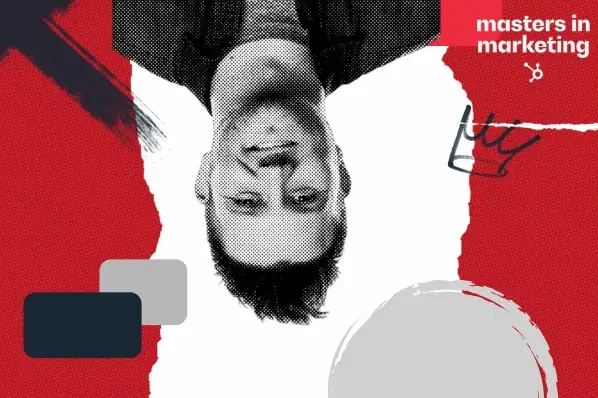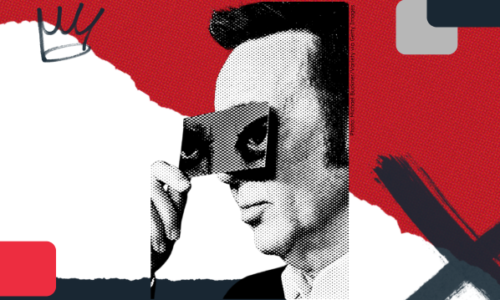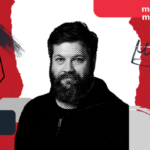How an Entertainment Strategy Helps You Cut Through the White Noise
- December 10, 2024
- Knowledge Base
- 0 Comments

This week’s master is always down for some fun, and he’s got the receipts to show it.
“The most fun brand in the world hired us to make them fun,” he grins. “We’re certified fun and we can prove it.”
Case in point: When I asked Chandler Quintin for an interview, I failed to mention what it was for (I’d blame Monday brain, but it was a Thursday) and he still gave me more laughs and insights than I could squeeze into this blog.
Lesson 1: Have an entertainment strategy.
“People are subject to marketing all day long, whether we ask for it or not,” says Chandler Quintin. I immediately think of scrambling for the mute button on the gas pump that’s blaring ads at me. Is no place sacred?
“If it’s at least interesting to watch and checks a box of ‘Hey, I didn’t mind seeing that,’ then everybody’s life will improve because we won’t be so inundated with boring stuff.”
Quintin fully believes we’re at what he calls “the peak of white noise on most platforms.” (And that goes double for you, B2B marketers.)
Do you use an ad blocker? Does your thumb have lightning-fast “skip ad” reflexes? Do you scroll past sponsored posts on LinkedIn? Well, so does the audience you paid so much to reach.
Quintin believes that the best way to cut through the white noise is to make content fun — and that one day soon marketing departments will have entertainment strategies the same way we now have editorial strategies.
“Now, I do want to clarify that when I say fun content, I’m not saying all of it has to be funny.” Funny is just one kind of fun, and fun looks different for different brands.
He gives the example of a campaign Video Brothers created for an outsourcing company. On the fun-ness scale, outsourcing usually ranks somewhere around popcorn kernels stuck in your gum line. Quintin and his team created an ad suite that focused on bleeping out the word “outsource” like a curse word. By tackling the taboo of outsourcing head-on, their ad stood out from competitors that danced around the topic.

But he emphasizes that the keyword is still “strategy” — you need an overarching plan for a well-connected marketing campaign based on audience insights.
“It’s not just about making one flagship piece of content and relying on that, it’s building a strategy around the fun content.” The outsourcing series, for example, was built on direct knowledge of customers’ attitudes toward their industry.
“Think less about the marketing and more about the people on the other end. What things might they be interested in?”
Lesson 2: Think less about marketing and more about people.
For Quintin, good marketing is all about people.
Even if you’re B2B, you’re not actually selling to a business, right? You’re selling to a CMO, a director, a manager — and, contrary to the jokes, those are people.
And the thing about people is that they’re not thinking about your great new feature. They’re thinking about meeting deadlines, or what’s for lunch, or getting the kiddo to band practice.
“A lot of marketers focus on product, features, benefits, all the things that their product or service can do,” Quintin says. “And, 9 times out of 10, the audience is just looking for a pain to be solved. They’re not getting excited about this new integration.”
For most businesses, this means not leading with your brand or even your product or service. Instead, lead with something your customers can connect to… then connect the dots to your product or service.
And, bringing it full circle, that’s also how you find the entertainment value.
“When you look at what pain your audience might have — that you’re solving for — there’s probably some humor or something clever within that pain, right?”
Lesson 3: Engage with the people who engage with you.
While you’re busy figuring out how to connect with your audience, don’t forget to actually connect with your audience.
“The number one thing you can do to maximize any budget you’re spending is to simply engage with the people who are engaging with you.”
And he’s not just talking about reactive engagement, like answering social messages or responding to emails. That stuff’s a given. He’s talking about proactive outreach to the people who interact with your business presence. Quintin himself sends a message to anyone who views his LinkedIn profile or watches a video he posts.
“We have booked almost 80% of our calls through simply engaging with people that engage with us versus them going to our website and filling out a form.”

And I’m a living testimonial to this tactic. Thursday morning, I’m sipping tea and cruising LinkedIn in search of marketing masters. (I do it for you! Well… not the tea. That’s for me.) Minutes later, Quintin messaged me asking for help because he was upside down. (See the hero image above.) Friday morning, we’re scheduling an interview.
Quintin acknowledges that this takes effort.
“It does take a lot of time. There might be some ways to automate it. But at the end of the day, I think people can kind of see through automations a little bit. Especially when you’re trying to make an authentic connection. The bar for that is: Just be authentic. Be a human being.”
But the return is worth the effort.
“If you only have $1,000, you’re going to be able to turn that $1,000 into the power of five or 10,000 if you just go that extra mile and engage.”
Throughout our interview, the conversation kept returning to two points: Being human. And having fun. That seems to be the soul of Chandler Quintin, who smiles as he drops the moral of our story:
If you commit to making fun content “the worst that can happen is someone remembers your brand.”





